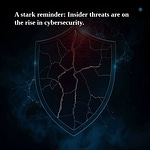Unveiling the Shadows: How TA406 Targets Ukraine in Cyber Espionage
Understanding North Korea's Tactical Shift Amidst Conflict – Insights for Cybersecurity Professionals
In an era where geopolitical tensions fuel rapid shifts in cyber warfare, the actions of threat actors can have profound implications. One such group, North Korea's TA406 (also known as Konni), has made a striking pivot to exploit Ukraine's political turmoil brought on by the Russian invasion. This article explores the methods employed by TA406, the ramifications of their intelligence-gathering efforts, and what cybersecurity professionals can learn to safeguard against such sophisticated threats.
The Motivations Behind TA406's Campaign
TA406's renewed focus on Ukraine isn’t a random maneuver; it’s a deliberate strategy aimed at understanding the dynamics of Ukraine’s resistance against Russia. By extracting information about Ukraine's defensive capabilities, North Korea seeks intelligence that could inform its own military strategies involving cooperation with Russian forces. Recent reports from the U.S. Defense Intelligence Agency and the 2023 Worldwide Threat Assessment underscore North Korea's commitment to utilizing cyber strategies for political and military gains, especially while navigating the confines of international sanctions.
Tactics of TA406: A Closer Look
To comprehend the threat posed by TA406, we need to delve into their sophisticated tactics:
Phishing Email Campaigns
Central to their strategy are fake yet compelling emails that mimic communications from established think tanks. Here are key characteristics:
Social Engineering: Leveraging current events and notable figures enhances the trustworthiness of the email.
Malicious Attachments: Payloads hidden within password-protected RAR and ZIP files create a facade of safety.
Delivery of Advanced Malware
TA406 ensures successful malware delivery through various innovative techniques:
Compiled HTML Help Files (CHM): These are strategically used to activate embedded PowerShell scripts, establishing backdoor connections.
Persistence Mechanisms: They implement
autorunscripts that secure continuous access to compromised systems.
Final Payload Uncertainty
While the specific end goals of TA406 remain speculative, previous patterns indicate the potential deployment of sophisticated Remote Access Tools (RATs) like Konni and BabyShark.
Credential Harvesting and Follow-Up Tactics
TA406 ingeniously deploys spoofed Microsoft alerts, which not only phish credentials but demonstrate their operational security acumen.
Broader Implications of TA406’s Activities
The intelligence-gathering operations by TA406 go beyond mere data collection; they could allow North Korea to evaluate its military alignments, especially in relation to Russian strategies. Unlike Russian cyber actors focusing primarily on battlefield tactics, TA406 aims at broader political espionage, assessing how Ukraine's stability affects North Korean military initiatives.
Recommendations for Cybersecurity Professionals
In light of these sophisticated cyber threats, organizations—especially those in government and critical infrastructure—should consider implementing these proactive measures:
User Education and Awareness: Regular training to recognize phishing attempts can greatly reduce risks.
Multifactor Authentication (MFA): Enforcing MFA provides an essential security layer for sensitive accounts.
Threat Intelligence Sharing: Collaboration amongst organizations enhances the collective defense against emerging threats.
Conclusion
The rise of TA406's cyber operations against Ukraine highlights the evolving nature of cyber threats within a tense geopolitical landscape. For cybersecurity experts, the key lies in adapting to these threats through continuous learning and strategic defensive measures. By keeping informed and vigilant, organizations can fortify their defenses against adversaries who are all too eager to exploit chaos for gain.











Share this post